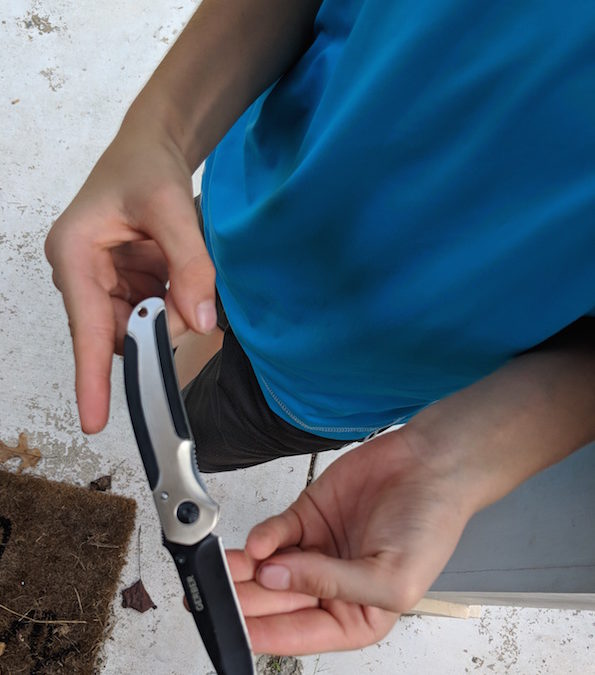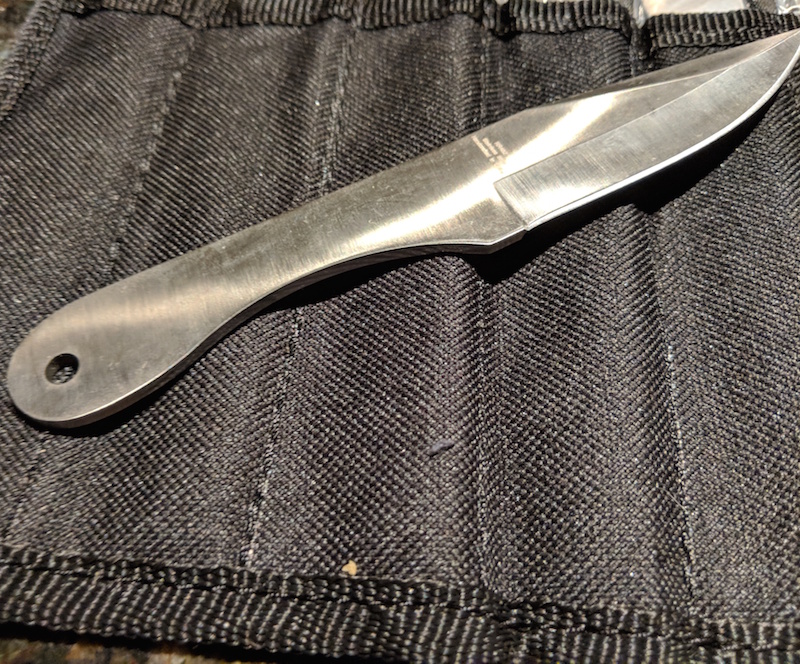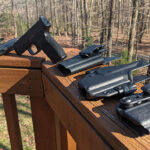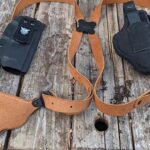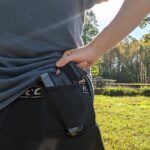Getting your child their first pocket knife is a momentous occasion. Whether it’s a boy or a girl, toting around a tool that can double as a weapon is a huge responsibility. A knife is a useful tool, and introducing one early on in life can set good habits for their EDC in the future.
However, what is a good age to give your child their first pocket knife? Generally speaking, 10 is a good age to introduce them to their first blade. You must ensure that your child comprehends the gravity of the responsibility you have given them. Furthermore, proper knife handling instruction must be given and retained. Obviously, you’ll need to assess your own child’s maturity level before presenting them with a knife.
We’ll cover why age 10 is the appropriate age and how to assess your child’s maturity. I will also offer suggestions on what is a good choice for their first knife and some general guidelines for instruction.
Table of Contents
Why 10 Is The Right Age For Their First Knife?
Here’s my reasoning behind the age of 10 being ideal for introducing your child to their first pocket knife. First, most 10-year-olds (in my experience) have a healthy respect for their elders. They are attentive and can process what they are being told. Not only can children process the information you provide them, but can retain that information as well.
Secondly, at this point in their life, they are familiar with the cause and effect pattern that results from their actions. This is important because there are very real consequences when handling a knife. They can impact both themselves and those around them. Instructing children about the “how to’s” of owning a knife is as important as the “why or why not” of handling their blade.
Third, at this point, your child has roughly 5 years of “real world” experience under their belt (not including infancy/toddlerhood). You’ll need to trust them at some point, and this is a big step in establishing that trust. Remember this trust goes both ways, but I’ll touch on that more in another section.
Finally, at the age of 10, there’s a little bit of wiggle room for you to make your decision. You have roughly 1-2 years in either direction to decide to give them their pocket knife. I don’t recommend giving a child in their early teens a blade unless they are late bloomers. This is simply because children begin to come into their own when they hit 13, and can be a bit more rebellious. Obviously, this varies from child to child, but the teenage years by and large are considered a phase of rebellion.
Assessing Their Maturity
Parenting is tough, and taking an objective look at your child maturity is even more difficult. Some parents tend to think their child is too immature to handle the responsibility of carrying a knife despite their actual maturity level. Others think that their child is a sage beyond their years, when in fact, they should not be given such responsibility.
Obviously, I recommend talking with your spouse about such a decision. Get their input (I don’t think my dad got my mothers — oops!) to see what they think about giving your child a blade. Regardless of whether you are together, the last thing you want is relations to break down because you, or they, went rogue.
It’s also worth noting how your child acts around their peers. This can be a good indicator of what their maturity level might be like when you aren’t around. Are they peer pressured frequently? If so, you may want to hold off a bit.
Another good indicator of your child’s maturity is the opinion of close family and friends. The latter will probably give you an objective assessment, whereas the former may view things through rose colored glasses.
Finally, take a look at your child’s grades and performance in school. If they are the class clown or fail with their academic responsibilities, then perhaps a knife is not the right choice for them at the moment.
Choosing The Right Knife For The Job
This section is about what knife you choose to give your child. I’ve talked about pocket knives in general, but there is a myriad of knives to choose from. So how do you pick the correct knife to give your child for their first?
First and foremost, check the legality of things in your state. You’ll want to look for things like blade length restrictions and assisted opening restrictions. Honestly, anything with an overly large blade or something that can inadvertently open should be avoided when picking a first knife.
Getting something like this Victronix Swiss Army knife off of Amazon is probably your best bet. Introducing them to a life of preparedness with this knife is easy. It focuses less on the blade, and more on common applications they’ll need to be equipped to handle.
Since the attachments lock in place, you won’t have to worry about them unintentionally opening the blade. There’s also rubber inlaid into the handle to ensure a firm grip. Also, it’s relatively small, which will fit nicely into their small pockets.
I’d avoid anything that is primarily viewed for self-defense weapon purposes. Things like karambits and knives with an emphasis on “tactical” should be avoided for their first knife. This would include anything advertised as a personal defense weapon. You don’t want them to associate the knife with violence. They should view their knife as a tool first.
Instructing Them Properly
I cannot stress enough that this is the biggest piece of the puzzle to ensuring your child handles their knife properly. Ideally, you will have experience, and be comfortable handling knives. Children should not be afraid of the knife but have a respect for it.
First and foremost, your child should be taught that this is NOT A TOY. It’s not a cool gadget to show their friends and allow them to play with. Explain that you are trusting them to handle this gift maturely and responsibly.
Now is a good time to explain that should you ever catch them violating any rules you set forth, that you will take the knife away. Explain that it’s not as a punishment, but for their safety and the safety of those around them.
Basic Knife Handling Rules
- Never to be used as a toy – can result in injury or death.
- Do not walk/run with the knife in the open position – you can fall onto the blade causing injury.
- When cutting/whittling make sure the blade is facing away from their body – prevents your hand from slipping and cutting yourself.
- Never leave the knife open unless you are using it – a blade at rest can fall and potentially hurt them or others.
- When handing the knife to someone else, close it first – to prevent your child from accidentally stabbing the other person.
- When handing over a knife that doesn’t close, hand them the handle, not the blade. – to prevent your child from accidentally stabbing the other person.
- Excessive force on a folding blade can cause it to close unintentionally – their fingers can get caught between the handle and the blade
Explain each of these rules to them, and why it’s important they are followed. Once you’ve explained them, don’t stop instructing. Whenever your child handles their knife in your presence correct any mishandling, and commend proper handling of their pocket knife.
If you’re apprehensive, feel free to allow your child to only use the knife under your supervision. I recommend you run through some scenarios to make sure the information stuck. Do not avoid taking the knife away if you see your child blatantly disregard the rules you set forth. It is important for them to understand the severity of their actions.
Parting Shots
Regardless of what age you decide your child is ready, make sure you trust them with the responsibility of carrying a knife. A successful experience can only be achieved with trust. You can build that trust slowly, but ultimately, you’ll need to trust completely. Buying your child their first knife is an important step in preparing them for life. It’s an even bigger step in setting them up for the everyday carry lifestyle.
Let me know your thoughts in the comment section. Is there any concern I did not address? Is there other information you’d like to know?
